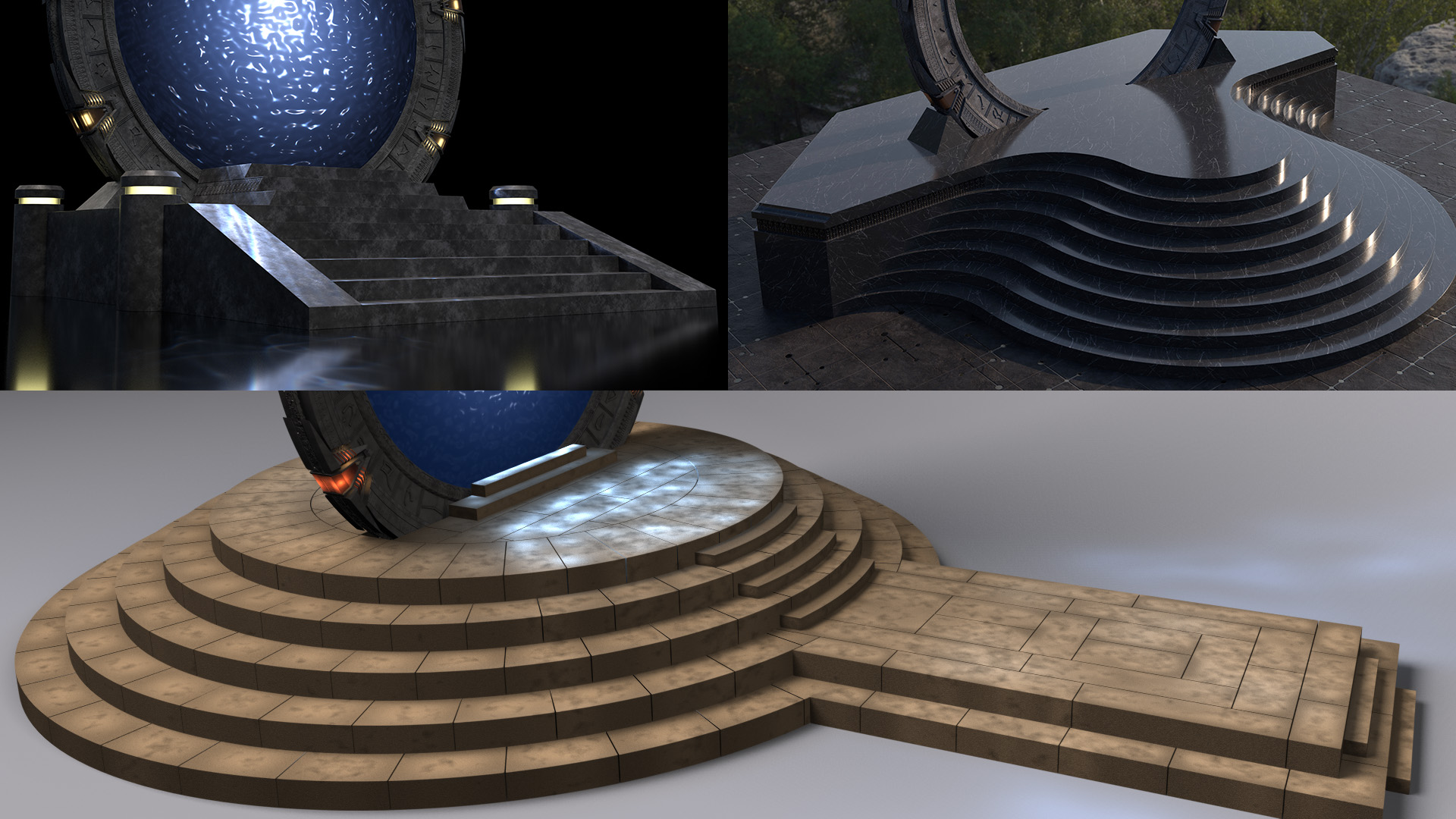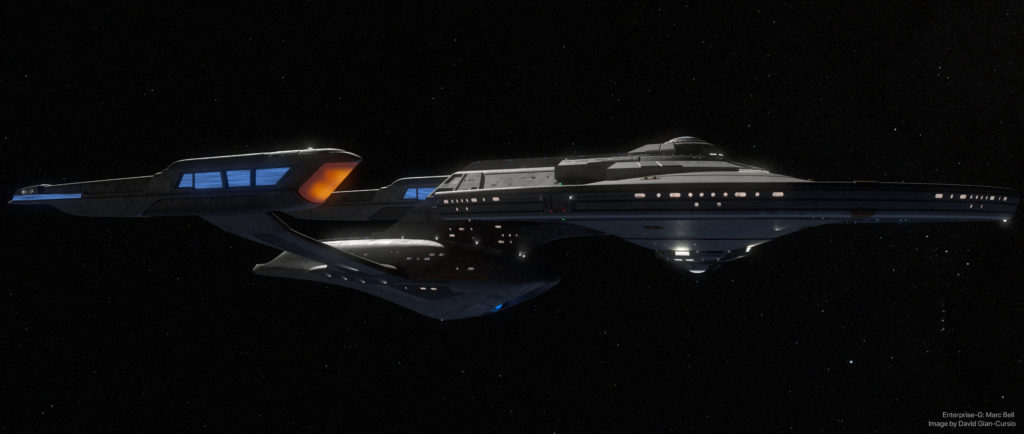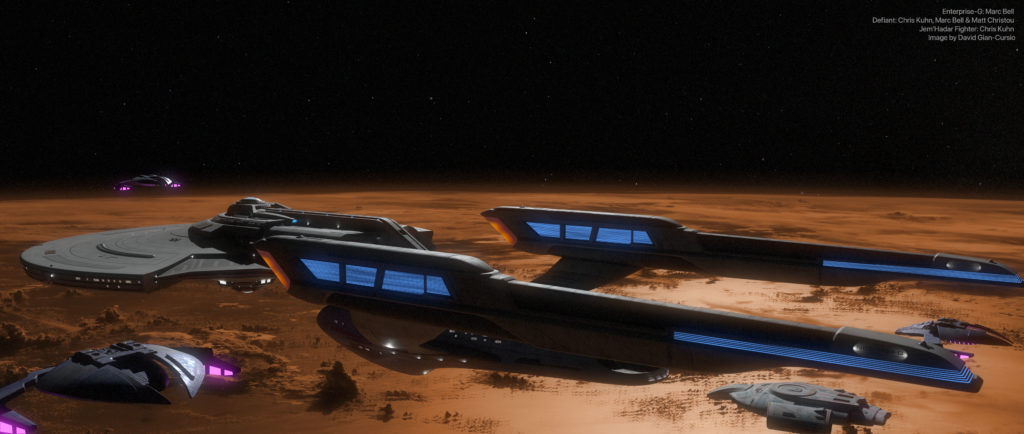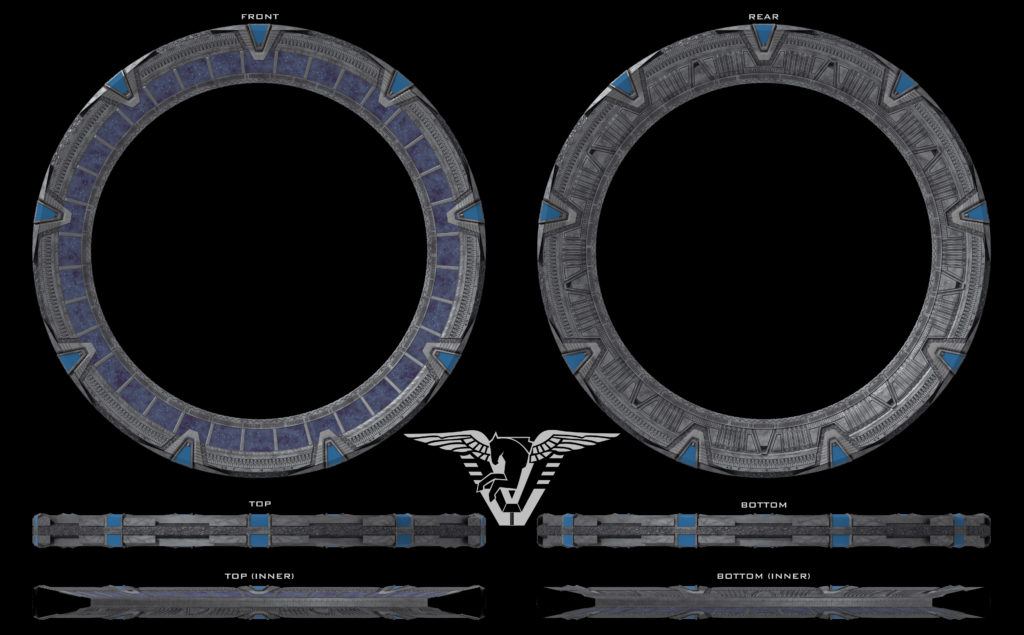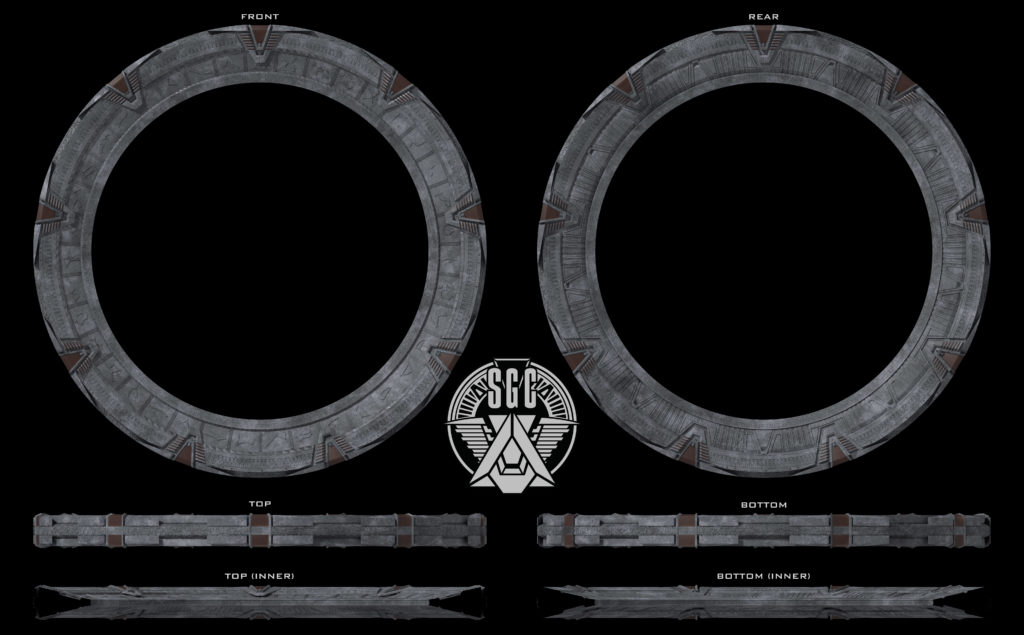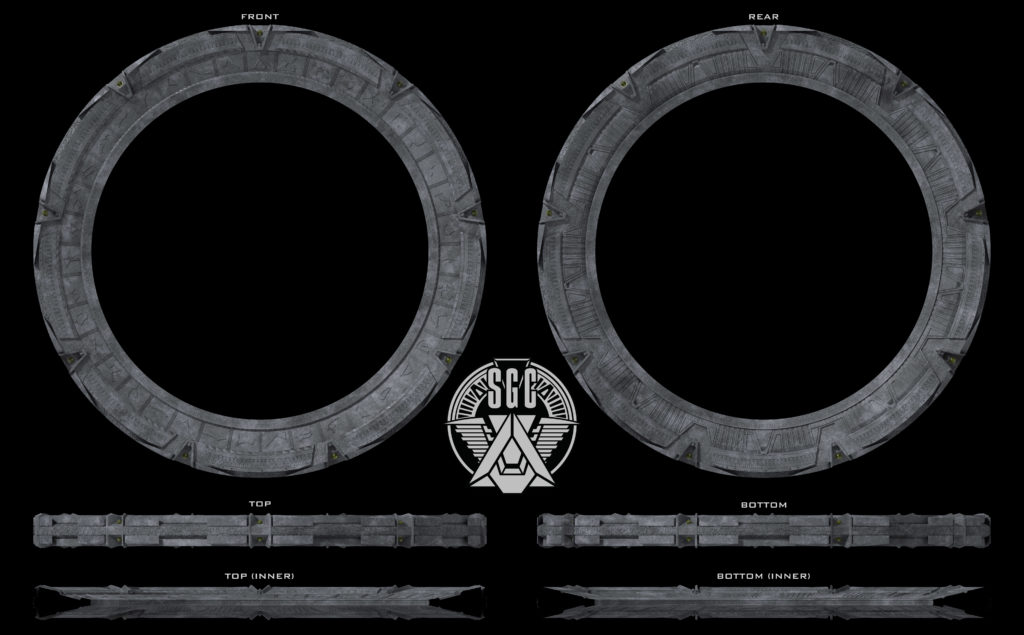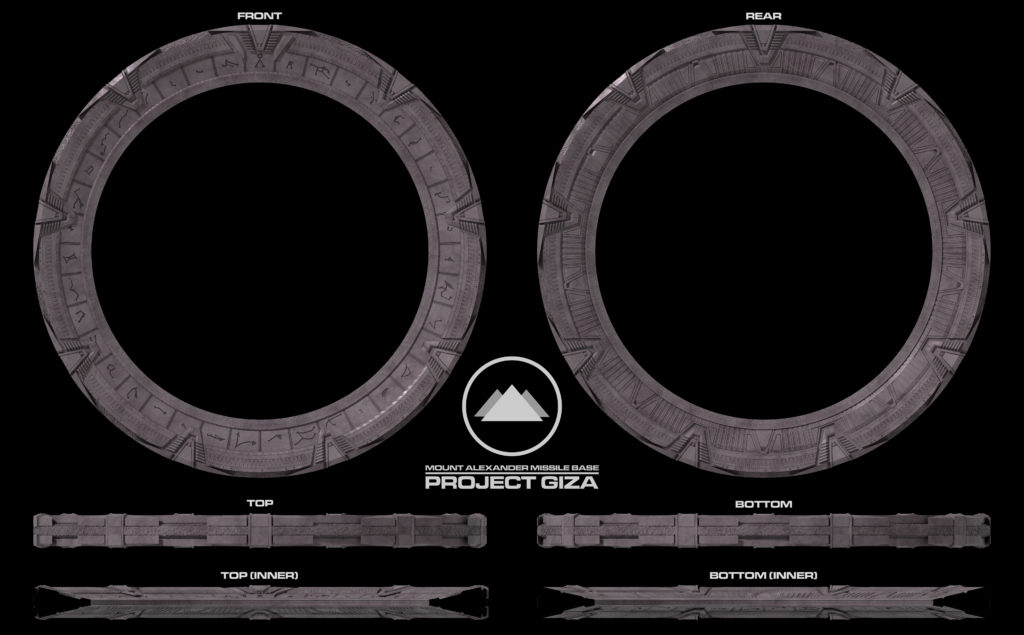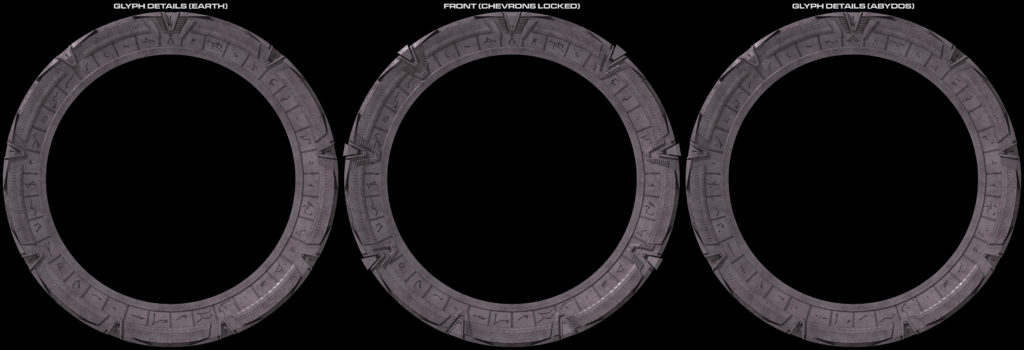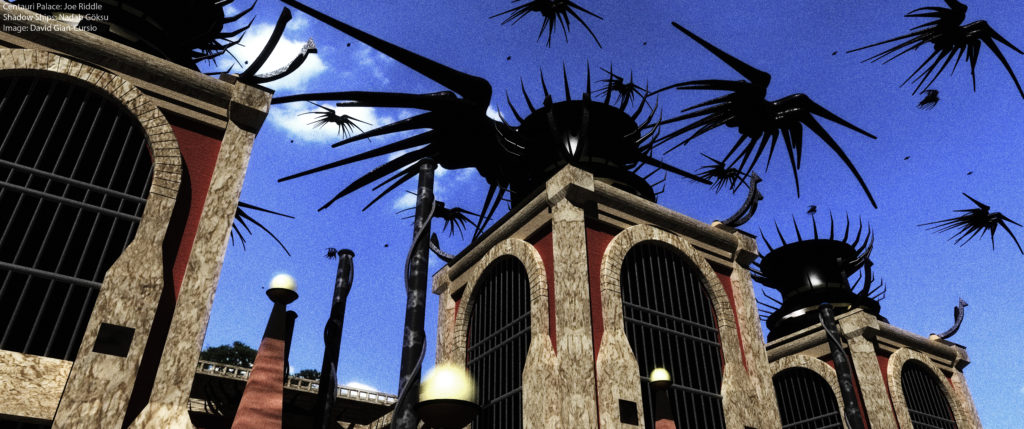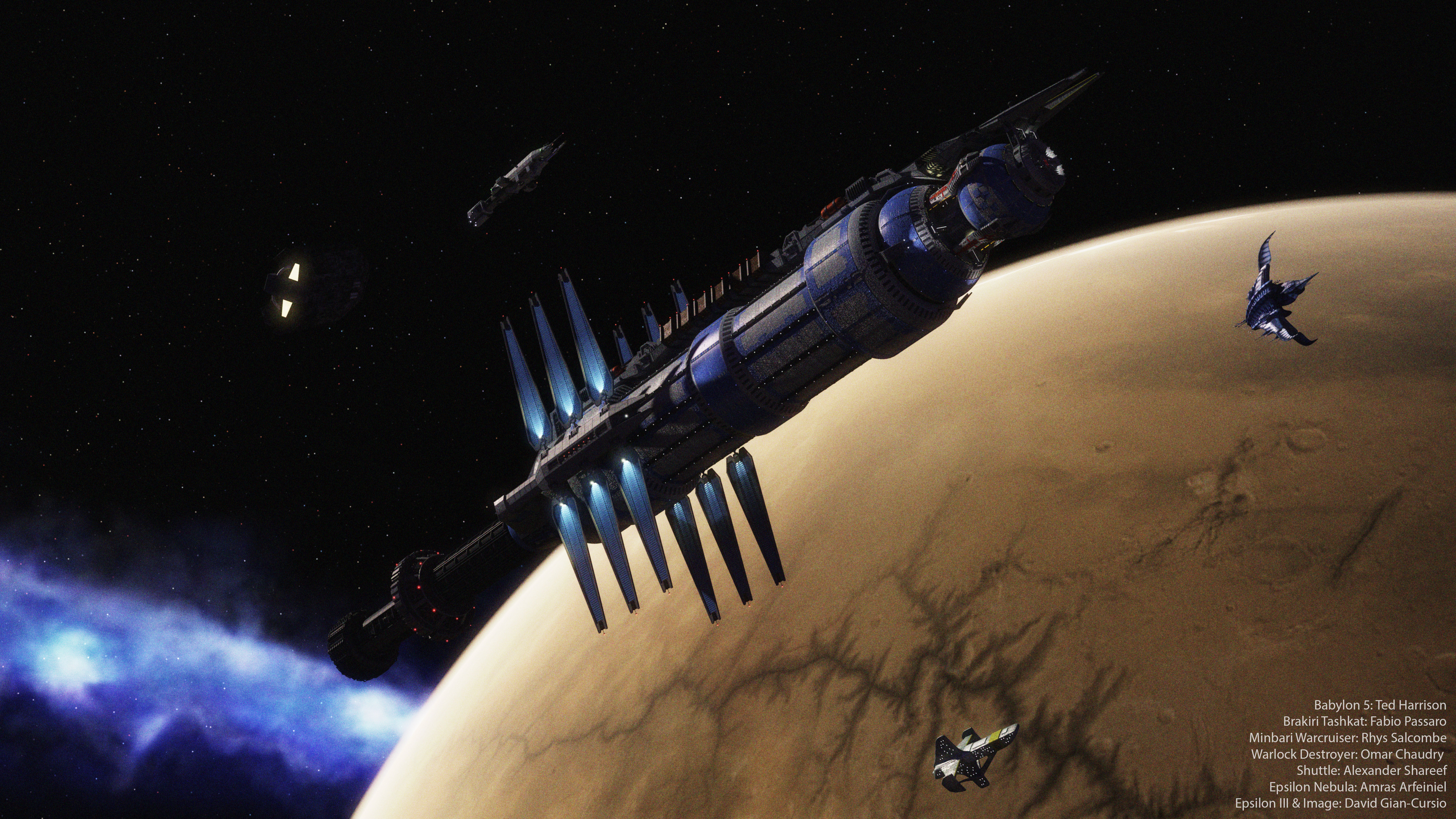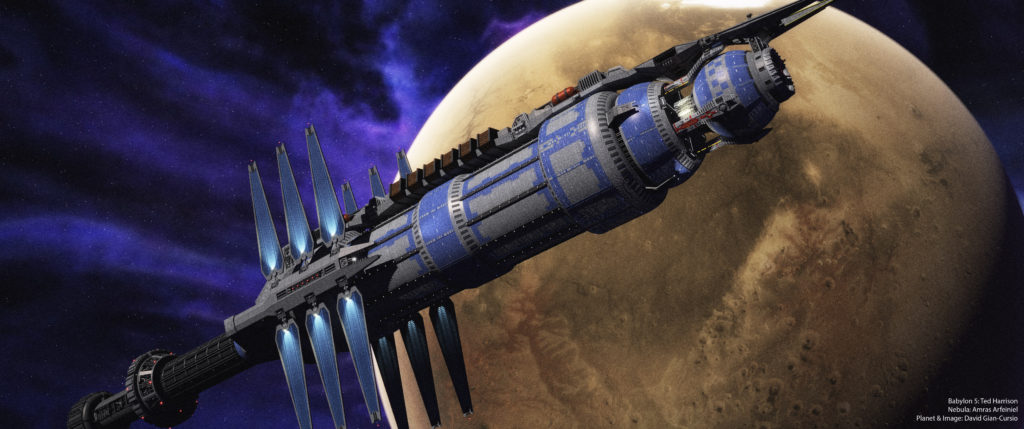After playing Homeworld 3 recently, I wanted to see how the Khar-Sajuuk and Khar-Kushan compared to the original Motherships (and, for that matter, how the original Mothership and Pride of Hiigara compared to each other) from the prior games, as well as Sajuuk an ancient ship discovered at the end of Homeworld 2 whose technology was incorporated into the next generation of Motherships, and the Kuun-Lan, the flagship in Homeworld: Cataclysm/Emergence, which is seen both its original configuration and its final appearance after several modifications over the course of the game. I extracted the models and texture maps from HWR and HW3 and set up this comparison scene. The scales are all directly as they came out of the game, cross-checked by the old trick of flying a fighter to one end and seeing how far the other one was with the move tool, so these are all to in-game scale.1The Kuun-Lan is at ~31% of the in-game figure, in accordance with the convention that the original Homeworld and Cataclysm/Emergence use feet as the in-game units, while the later games use meters. If anyone wants to use these images in another scale chart, the vertical edge of the image is 3,460 meters tall.
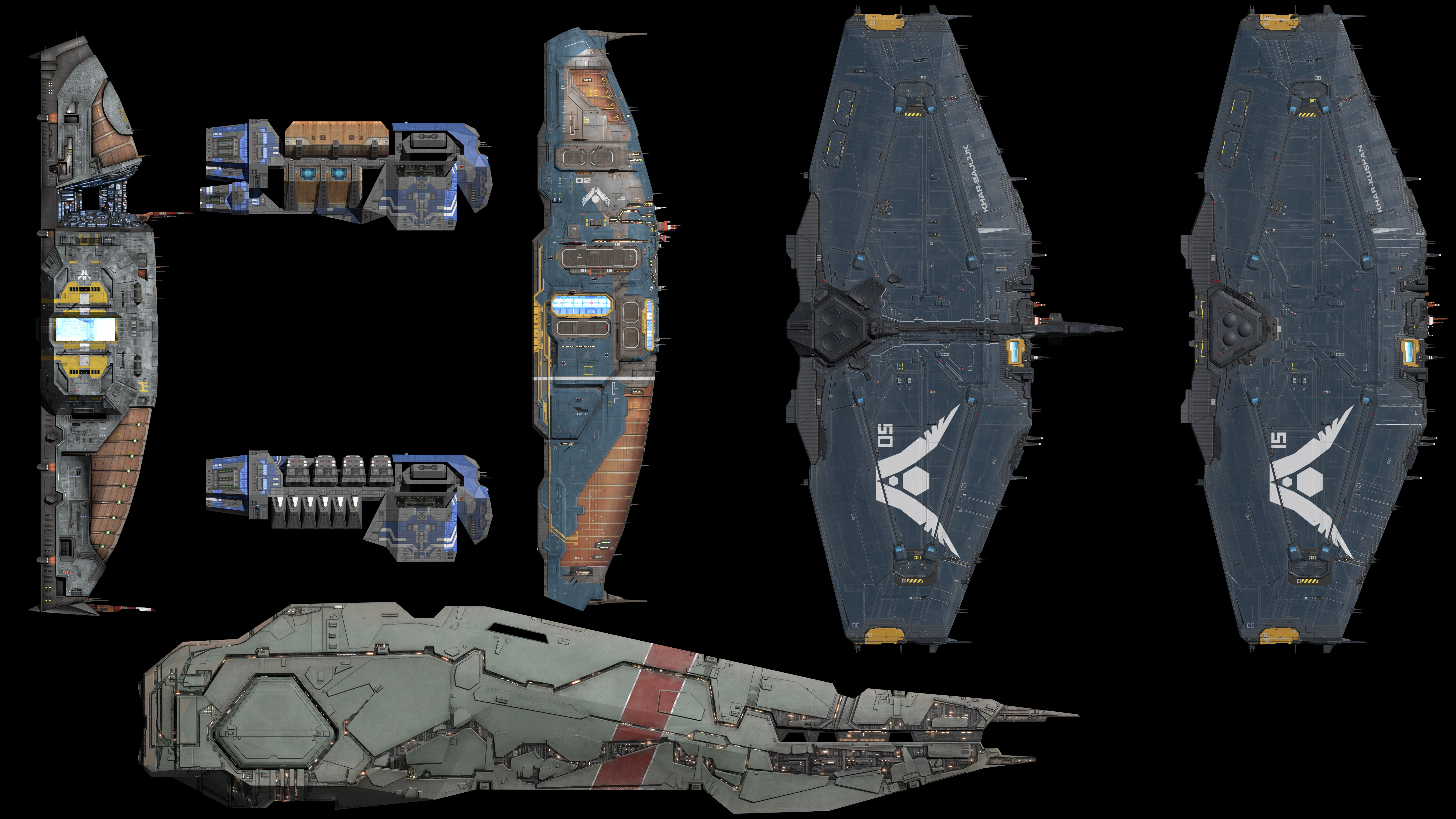
(Technically, the HW3 Motherships are upside-down compared to how they orient vertically in-game, but the top is their “hero” angle, and starboard is the usual perspective on the first two Motherships, so I had to compromise.)
However, I’m not entirely trusting of the in-game scale. After all, the original Homeworld’s manual says the first Morthership is “really” ten or twenty times larger than it is in-game. I made a second image, this time scaling the HW3 Motherships up so the size of their Hyperspace Core modules matched the similar feature on Sajuuk (the main cannon on the Khar-Sajuuk is clearly derived from Sajuuk, but the shape is different enough that there was nothing to scale-match), assuming since the ships from HW1 and 2 can all interact with each other in campaign and skirmish and are all Mothership-class, they’re all correctly sized relative to each other. There’s a little leeway involved, the two Hyperspace Core housings aren’t exactly the same shape, but this method makes the HW3 Motherships about 1.6 times longer than they are based on the in-game scale. The vertical edge of this image is 4650 meters tall, assuming the in-game scale for the HW1 and 2 ships is correct and they aren’t actually supposed to be twenty times larger.
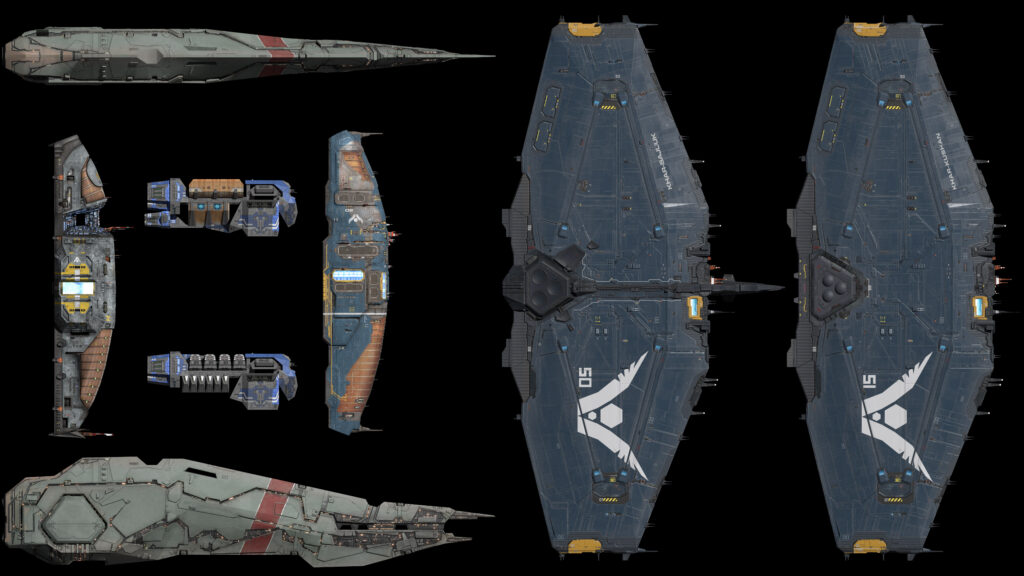
I like this alternate scaling better, myself. Given how massive Sajuuk was compared to the Pride of Hiigara, I think it makes sense that a Mothership that was more-or-less built around it should be a similar leap in scale, revolutionary rather than the evolutionary change from HW1 to HW2. You can’t see it from this angle, but it also makes the Frigate launch bay and the fighter bays at the wingtips close to the same size as the prior Motherships’, rather than noticeably smaller, which is enough to make me wonder if the ship was scaled down after it had been designed for some reason. I did compare some of the other Homeworld 3 ships with their Homeworld 2 equivalents, and it appears if there was a post-design scale-change, the Motherships were the only vessels affected. Additionally, checking against the Hyperspace Core model (reused in Homeworld 3 from Homeworld 2 Remastered directly), there’s excessive amounts of room under the shaded circles on the Sajuuk’s module, the ends only barely exceed the circles of the Khar-Sajuuk’s module at the in-game size, and they’ll even fit centered under the domes of the Khar-Kushan’s module, properly rotated so they don’t collide (and the Khar-Kushan’s cores may not be the same shape or size as the three used in the Sajuuk and Khar-Sajuuk). So the smaller in-game scale for the ships is possible, even if I don’t personally like the idea of the ships echoing features of Sajuuk so closely but at a different size.
Acknowledgement to the original concept and 3D artists and developers of Homeworld, Homeworld: Cataclysm/Emergence, Homeworld 2, Homeworld Remastered, and Homeworld 3. Thanks to ArkFlash for the Cataclysm/Emergence models. Homeworld 1 and 2 Remastered models were extracted with CFHodEd and Gearbox’s Modding Tools. Homeworld 3 models were extracted with UE Viewer and converted using Blender using this plug-in. All models were resurfaced and rendered in Lightwave.
| ↑1 | The Kuun-Lan is at ~31% of the in-game figure, in accordance with the convention that the original Homeworld and Cataclysm/Emergence use feet as the in-game units, while the later games use meters. |
|---|

